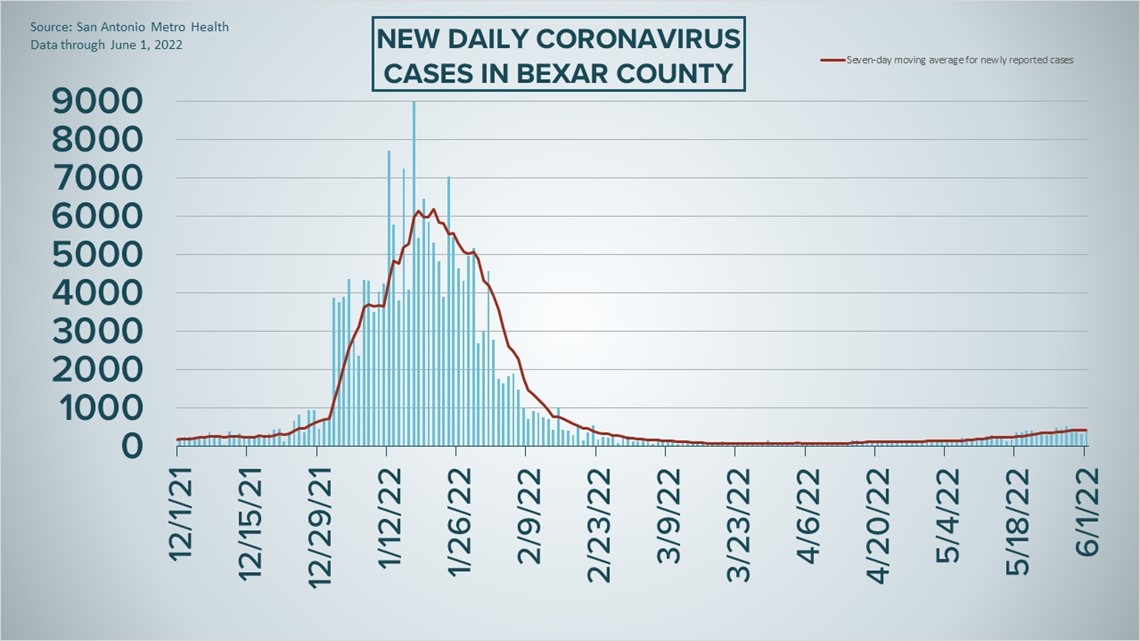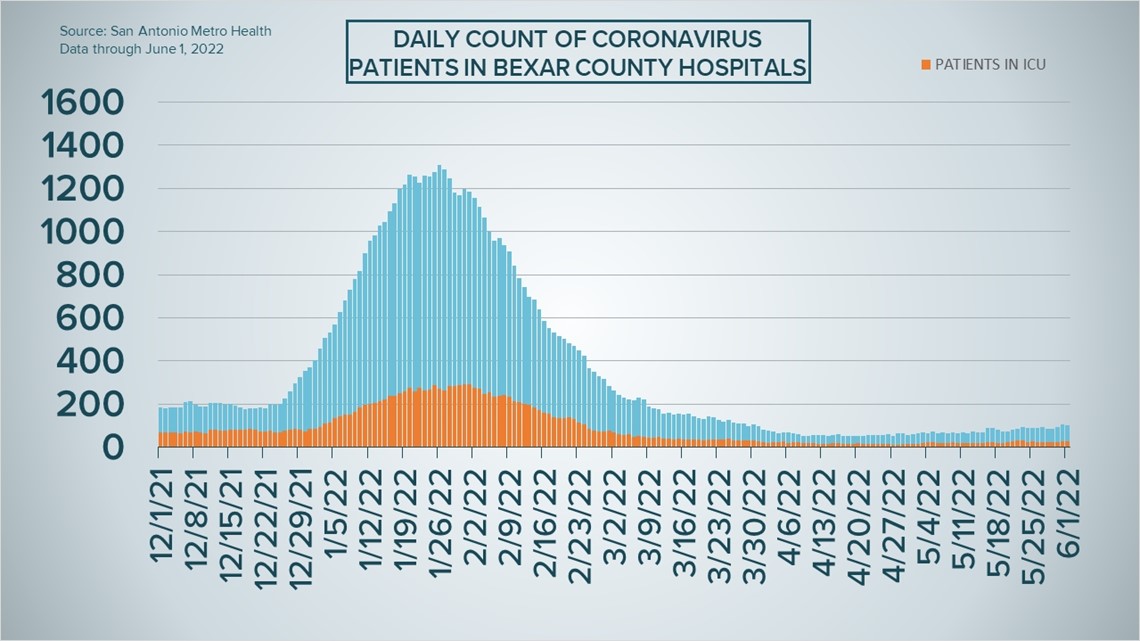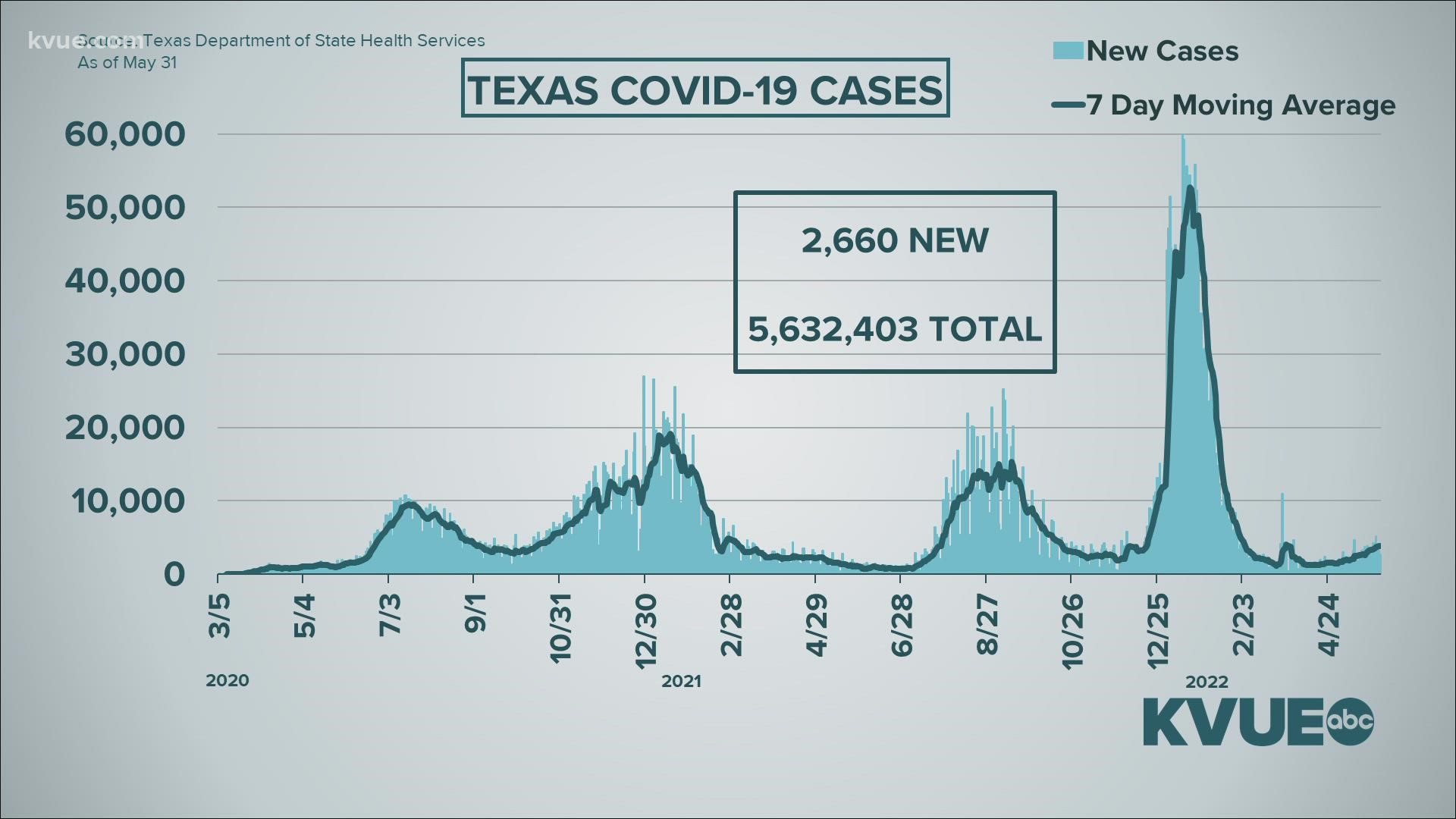SAN ANTONIO — The number of San Antonio-area residents hospitalized with COVID-19 is in the triple-digits for the first time in over two months this week as the community continues confronting May's small wave of new infections. May yielded an average of 274 new cases each day, up from 90 in March and 96 in April.
For the first time since January, Bexar County finished a month with more local coronavirus-related hospitalizations than it started with, according to Metro Health data. On Wednesday, 102 residents were receiving treatment for the virus locally.
And while the number has ticked up in recent weeks, the stress level on hospitals is still nowhere near its January peak, when there were upwards of 1,200 patients and thousands of new cases being reported on a daily basis.
Of those 102 patients hospitalized Wednesday, 28 were in intensive care and 14 were using ventilators.
Metro Health's risk level remained at low and "worsening" for a third straight week, meanwhile, and the seven-day new case average was 424 on Wednesday—the highest that number has been since Feb. 21. A total of 385 new infections were reported Wednesday, bringing Bexar County's pandemic total to 550,850, and the positivity rate rose once again to 13.8%.
No new deaths have been reported since last week. In all, 5,328 Bexar County residents have died from virus complications.
How Bexar County is trending




Vaccine Progress in Bexar County
The following numbers are provided by San Antonio Metro Health. A full breakdown can be found here.
- 1.451 million eligible Bexar County residents are fully vaccinated as of Monday, May 16.
- More than 518,000 eligible Bexar County residents have received their COVID-19 booster shot, as of Monday, May 16.
The CDC states that "when a high percentage of the community is immune to a disease (through vaccination and/or prior illness)," that community will have reached herd immunity, "making the spread of this disease from person to person unlikely."
The City of San Antonio breaks down the vaccination rates by zip code on Metro Health's Vaccination Statistics page.
Coronavirus in Texas
The total number of coronavirus cases in the state since the pandemic began grew by 4,876 on Wednesday, according to the Texas Department of State Health Services. That total includes 3,548 new confirmed cases and 1,328 new probable cases. More details can be found on this page.
Wednesday's figures bring the total number of Texans diagnosed with COVID-19 to more than 6.863 million.
An additional two Texans have died from virus complications, meanwhile, raising the statewide death toll to 86,819.
Coronavirus symptoms
The symptoms of coronavirus can be similar to the flu or a bad cold. Symptoms include fever or chills, cough, shortness of breath or difficulty breathing, fatigue, muscle or body aches, headache, new loss of taste or smell sore throat, congestion or runny nose, nausea or vomiting, and diarrhea, according to the Centers for Disease Control.
Most healthy people will have mild symptoms. A study of more than 72,000 patients by the Centers for Disease Control in China showed 80 percent of the cases there were mild.
But infections can cause pneumonia, severe acute respiratory syndrome, kidney failure, and even death, according to the World Health Organization. Older people with underlying health conditions are most at risk.
Experts determined there was consistent evidence these conditions increase a person's risk, regardless of age:
- Chronic kidney disease
- COPD (chronic obstructive pulmonary disease)
- Obesity (BMI of 30 or higher)
- Immunocompromised state (weakened immune system) from solid organ transplant
- Serious heart conditions, such as heart failure, coronary artery disease, or cardiomyopathies
- Sickle cell disease
- Type 2 diabetes
- The CDC believes symptoms may appear anywhere from two to 14 days after being exposed.
Human coronaviruses are usually spread...
- Between people who are in close contact with one another (within about 6 feet).
- Through respiratory droplets produced when an infected person coughs, sneezes or talks. These droplets can land in the mouths or noses of people who are nearby or possibly be inhaled into the lungs.
- Some recent studies have suggested that COVID-19 may be spread by people who are not showing symptoms.
Help stop the spread of coronavirus
- Stay home when you are sick.
- Eat and sleep separately from your family members
- Use different utensils and dishes
- Cover your cough or sneeze with your arm, not your hand.
- If you use a tissue, throw it in the trash.
Find a Testing Location
City officials recommend getting a COVID-19 test if you experience fever or chills, cough, shortness of breath or difficulty breathing, fatigue, muscle or body aches, headache, new loss of taste or smell, sore throat, congestion or runny nose, nausea or vomiting, or diarrhea.
Here's a Testing Sites Locator to help you find the testing location closest to you in San Antonio.
Latest Coronavirus Headlines
- Dominant coronavirus mutant contains ghost of pandemic past
- Nation’s first federally backed test-to-treat COVID-19 site set to open
- Shanghai moves toward ending 2-month COVID-19 lockdown
- People with food allergies may be less prone to COVID infection, study finds
- North Korea moves to soften COVID restrictions as outside observers doubt COVID recovery stats
- With COVID numbers slowly going back up, many have stopped following guidelines

